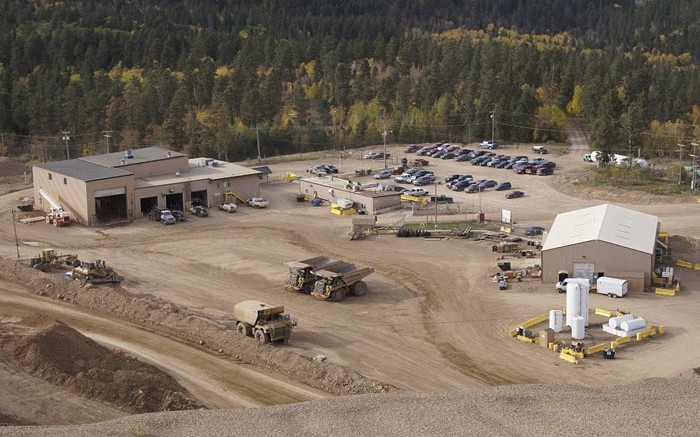Raymond James analyst Phil Russo has reviewed 67 mergers and acquisitions (M&A) in the gold space since 2010 to determine how many are viable producing, developing and streaming deals. He has found that 40% of transactions would not recoup their total costs, based on current reserves and resources at today’s gold prices.
In an emailed response to The Northern Miner, Russo concedes that he expected the negative outcome, given the number of bad deals, but not the magnitude of the loss, or the pricing environment those transactions need to become “better or break-even deals.”
He says that “the gold space needs higher prices to rationalize deals, or there needs to be incremental reserve and resource growth shown post-transaction.”
Despite the metrics used to gauge the economics of a deal, Russo argues that a transaction is a success if it covers its total cost. This includes upfront acquisition costs and any initial development capital required before producing cash flows. To assess a deal’s total cost, he used two metrics — payback period and internal rate of return (IRR).
“We observe in the industry the rationale for M&A being driven by net asset value, production, cash flow, reserve, diversification … but rarely do we hear executives discuss the recoupment of all capital — that is total cost. We’d like to see more discussion on that principle, which is where the real benefits flow to shareholders.”
Using a US$1,150 per oz. gold price, the analyst calculated the payback and IRR for each deal’s total cost. He also projected the commodity price needed for each deal to break even, and the metal price needed to produce a 10% IRR on total costs.
Of the 67 transactions assessed, an estimated 27 cannot repay their total costs in today’s commodity price environment. This group consisted of 26 producing and development deals and one royalty/streaming transaction. The latter deal was Silver Wheaton’s (TSX: SLW; NYSE: SLW) stream on Hudbay Minerals’ (TSX: HMB; NYSE: HBM) 777/Constancia assets.
For the 40 deals that could recoup their total costs, the report indicates an average 11-year payback. The best payback was on Northern Star Resources’ acquisition of Newmont Mining’s (NYSE: NEM) Jundee mine at 1.1 years, with the worst being on Silver Wheaton’s streaming deal on the Antamina mine at 23 years.
On a total cost basis, the average IRR of the 67 transactions reviewed was 2%. Northern Star’s Jundee purchase topped the list with a 91% IRR, while Endeavour Mining’s (TSX: EDV) Nzema deal finished last with a negative 33% IRR.
Russo points out that if the gold prices remained unchanged from the date of each acquisition, the average IRR for the total transactions would have been 9%, versus 2% today.
The best economic deals include Northern Star buying Jundee and Barrick Gold’s (TSX: ABX; NSYE: ABX) Kanowna Belle/Kundana assets; OceanaGold’s (TSX: OGC) acquisition of Newmont’s Waihi mine; and Coeur Mining (NYSE: CDE) picking up Goldcorp’s (TSX: G; NYSE: GG) Wharf mine.
All these deals have high IRRs, short paybacks and low break-even gold prices.
For example, the Jundee transaction boasts a 91% IRR and a 1.1-year payback, with estimated gold prices of US$853 per oz. to break even, and US$880 per oz. to produce a 10% IRR. If the gold price stayed at US$1,296 per oz. — the same as on its acquisition date — the total deal IRR would be 134% today.
The worst three overall economic deals include Barrick’s Equinox transaction, with a payback shortfall on the total costs of US$8 billion, and a required copper price of US$6.20 per lb. to break even. Kinross Gold’s (TSX: K; NYSE: KGC) Red Back acquisition has a US$4.8-billion payback shortfall, and a gold price of US$1,740 per oz. to break even. Goldcorp’s Andean Resources (Cerro Negro) transaction has a US$2.7-billion payback shortfall, and a break-even gold price of US$1,600 per oz.
When ranking the 67 transactions on the gold price needed to recoup total costs, streaming deals were in the bottom quartile for break-even prices, supporting their lower-risk perception, Russo says. (The report included 16 royalty/streaming deals.)
The analyst also used payback and IRR metrics on potential M&A candidates in Raymond James’ coverage universe, including Asanko Gold (TSX: AKG; NYSE-MKT: AKG), Guyana Goldfields (TSX: GUY), Kaminak Gold (TSXV: KAM), Alacer Gold (TSX: ASR; ASX: AQG), Roxgold (TSXV: ROG) and Orezone Gold (TSX: ORE). He found all fared well on a total cost IRR basis, assuming a 40–70% premium on takeout.
Larger M&A candidates Detour Gold (TSX: DGC) and New Gold (TSX: NGD) also fared positively, with both requiring gold prices of US$1,050 per oz. to break even, which is below the average of the previous 51 transactions of US$1,270 per oz.
The two candidates that stand out with current commodity prices are Alacer and Detour, Russo says.
“Not often flagged as a candidate, Alacer screened well with its long-life, low-cost Copler asset, showing good break even and IRR.”
Detour, often viewed as a takeover candidate, screened well considering “large-size deals have a harder time showing positive numbers,” Russo explains. “It can break even at lower prices and produce a positive return, if you bought it for a 40% premium today.
“The fact that our candidates show good numbers implies attractive price points today for the stocks, if all else is equal.”


Be the first to comment on "A sobering look at gold M&A since 2010"